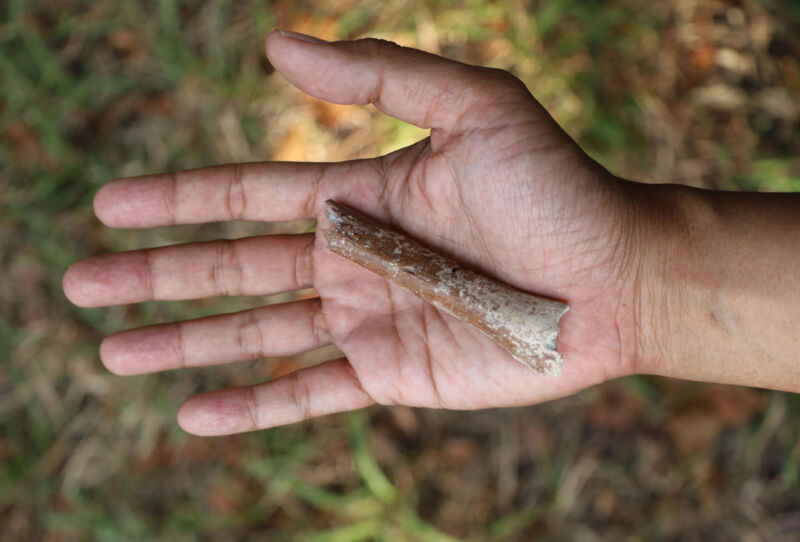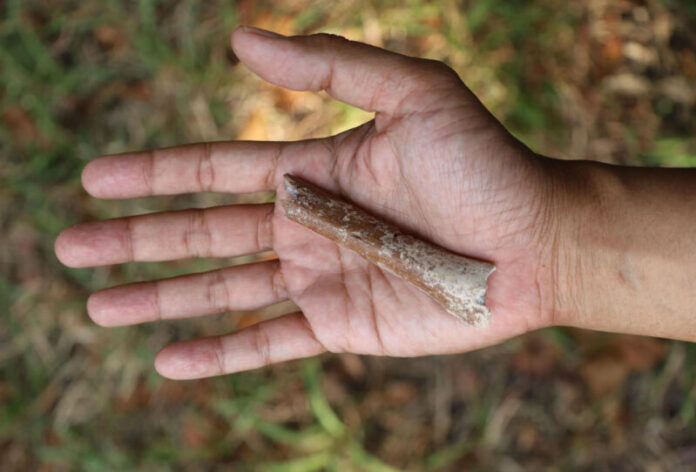
Enlarge / Half of the upper arm bone of this species can fit comfortably in the palm of a modern human hand. (credit: Yousuke Kaifu)
The discovery of Homo floresiensis, often termed a hobbit, confused a lot of people. Not only was it tiny in stature, but it shared some features with both Homo erectus and earlier Australopithecus species and lived well after the origin of modern humans. So, its precise position within the hominin family tree has been the subject of ongoing debate—one that hasn't been clarified by the discovery of the similarly diminutive Homo luzonensis in the Philippines.
Today, researchers are releasing a paper that describes bones from a diminutive hominin that occupied the island of Flores much earlier than the hobbits. And they argue that, while it still shares an odd mix of features, it is most closely related to Homo erectus, the first hominin species to spread across the globe.
Remarkably small
The bones come from a site on Flores called Mata Menge, where the bones were found in a large layer of sediment. Slight wear suggests that many of them were probably brought to the site by a gentle flood. Dating from layers above and below where the fossils were found limits their age to somewhere between 650,000 and 775,000 years ago. Most of the remains are teeth and fragments of jaw bone, which can be suggestive of body size, but not definitive. But the new finds include a fragment of the upper arm bone, the humerus, which is more directly proportional to body size.
Read 9 remaining paragraphs | Comments
Ars Technica - All contentContinue reading/original-link]




